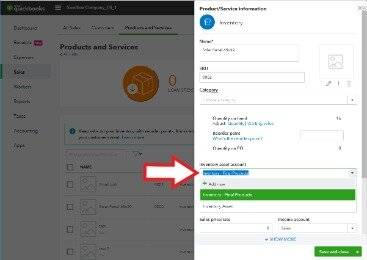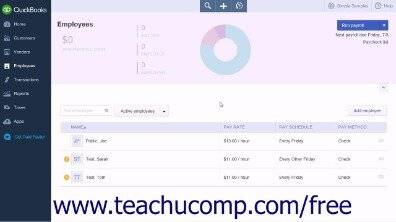The Beginners Guide to Pricing Strategy
Content

Airlines, grocery, and luxury goods – to name a few – have long known the value of pricing and embraced some of the most obvious but effective pricing strategies. But as market conditions become increasingly volatile more businesses are looking at pricing and considering how it can work harder for them. Pricing strategy is no longer confined to marketing and sales teams, it’s a boardroom topic and under more scrutiny than ever. Companies traditionally use value-based pricing for limited edition products. Every time Kylie Jenner’s makeup brand, Kyle Cosmetics, launches a new product, customers receive an alert to sign up for “first access”, while a countdown timer creates a sense of urgency.

This is the only way to ensure a successful roll-out, with all key stakeholders included as part of the discussion. Don’t forget, it is your business and what your competitors are doing may bear little resemblance to your pricing strategy. Think about your proposed pricing strategy as one which its adapted to your organization’s unique strengths and weaknesses. So, the question is, how should your company progress forward from strategy to implementation?
Dynamic Pricing Strategy: Chicago Cubs
In other companies, that role may be taken up by the Pricing Manager, Sales Manager or even the Marketing Manager. Pricing is so cross-functional that it can live almost anywhere in a business. Consequently, in this article, we will examine eight key considerations to assist your business in the successful implementation of your own unique price strategy. However, before making any business decision, you should consult a professional who can advise you based on your individual situation.
- You’ll capture revenue from buyers who have the most need and demand for your product or service, but be priced out of the market for the majority.
- Rather than having to upgrade to a more comprehensive plan to access a single feature, they can simply add it on.
- “In fact, when the prices were shown as daily figures, they were five times more likely to be rated as a great deal than when they were shown annually.
- Yet, the process simply requires you collecting data via surveys from your target customers.
- Choose something that can quickly or immediately address one or more key pricing pain points.
- Secondly, the difference in the cost of the bundle and the price of the items individually is significant (it’s much cheaper), so it creates the illusion of greater value.
- Some pricing strategies lend themselves to certain industries better than others.
And to see what’s really selling, look for products with a long list of reviews; that’s a good sign that their pricing may be in the right place and at least isn’t preventing customers from purchasing. This strategy is good in terms of brand positioning , and it’s also fairly easy to use. But it still doesn’t consider your customers’ willingness to pay, and therefore, it will most likely generate suboptimal profits.
Ready to create your first business? Start your free trial of Shopify—no credit card required.
Unfortunately, many organizations take a “set and forget” approach to pricing and fail to develop a comprehensive, research-backed strategy to determine appropriate pricing points. Learn about the different pricing strategies, how to choose the optimal approach based on the type of company you operate. The more sophisticated your pricing strategy, the better your chances of success.
- There are dozens of pricing models and strategies that can help you better understand how to set the right prices for your audience and revenue goals.
- To summarize, almost everyone in the software and SaaS space will benefit from value based pricing.
- This is a more flexible model that recognizes how different areas or regions have different earning levels and different living costs.
- Oftentimes, pricing is considered an afterthought by organizations launching new products, when it should really be at the forefront of the decisions you make.
- With the perpetual license pricing model, customers pay a one-off fee and have access to the product in perpetuity.
Pricing Strategy Guide is a strategy where you change prices based on changing market trends and outside conditions, such as time or location. In essence, the idea is to sell the same product or service at different prices under different circumstances. So, how then do you find that “sweet spot” where you’ll always be operating at a profit while keeping your buyers happy and satisfied?
Evaluate pricing potential.
It also doesn’t take into consideration the customer and what their perceived value of your product is, and how much they’re willing to spend. Another problem with this model is it doesn’t encourage the people who are building your product to be prudent. If you’re not careful, people can go in with the attitude of ‘well, we’re going to add 30% onto however much it costs us to make, so it doesn’t matter how much it costs, we’ll profit anyway’. The key disadvantage of cost-plus pricing is it doesn’t factor your competitors into the equation. By ignoring competitor pricing, there’s a good chance you could end up charging considerably more and achieving small profits, or considerably less, and giving away potential profits. Remember, this model is more widely used among physical products because their material costs can be easily identified; the same can’t necessarily be said for SaaS products.

A value based pricing strategy works to determine the true willingness to pay of a target customer for a particular product by utilizing customer data. Most common pricing strategies and methodologies forget about the customer, instead focusing on internal reasons and/or competitive metrics to justify prices. Yet, customers don’t care how much something cost you to make or your competitors, they care how much value they’re receiving at a particular price.
With a flat-rate pricing model, you charge one price for access to all of your product features. Basecamp, for example, uses the flat-rate pricing model, which is unusual in SaaS. As the company grows, you’ll continue to demonstrate value through the results your product generates, as well as any marketing and sales activities you engage in to increase your annual contract value. This is a powerful method for attracting revenue growth from SME customers. When new customers in this segment sign up, they’re more likely to opt for a more affordable plan.
How is pricing strategy done?
Developing a pricing strategy involves choosing a method and creating a model to determine the best price to charge for a product or service based on a variety of factors. These include your market, competitors, and customer base. Models should be continually refined using data-driven insights.
Before you make any decisions, it’s good to become familiar with common pricing strategies so that you set the right price the first time. Educating yourself about how to set pricing can give you a competitive advantage. This guide will walk you through different pricing methods and how to find the right strategy for your business. This type of pricing strategy works especially well if your target audience includes early adopters who like to be ahead of the pack. Companies that sell luxury, high-tech, or exclusive products—especially within the fashion or tech industry—often use a premium pricing strategy. The idea here is that customers will switch over to your company from a competitor, and you’ll be able to gain a foothold, despite making less revenue and profit per customer than you could if you charged more.
Smart Pricing Strategies to Attract Customers
Odds are fewer yachts are going to be sold, but they drive in a much higher revenue and profit. Tecno is a well-known mobile phone company that uses a competitive pricing strategy to generate sales. Among the many challenges involved are balancing healthy profit margins with sufficient sales volume and keeping pace with varied and ever-evolving consumer preferences. But those changes need to be strategic, based on the data you have and designed to get you still more valuable information about your market and your customer.

